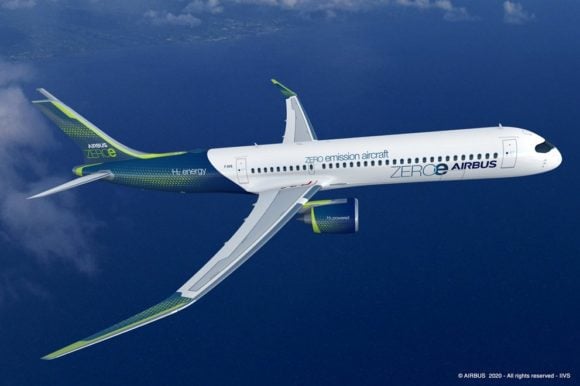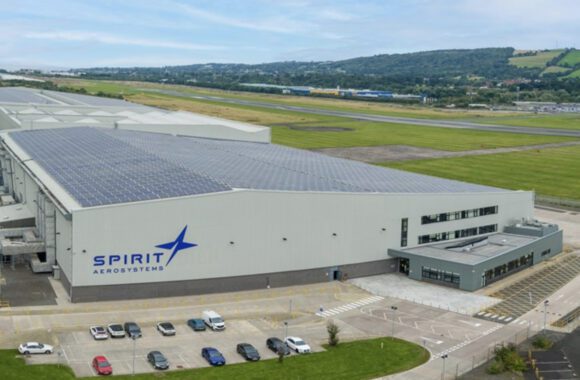
arianegroup ariane6 etage superieur header
Airbus prepares for its liquid hydrogen infrastructure that should produce the next generation of airliners. It has formed two Zero-Emission Development Centers in Bremen and Nantes that will produce key components for the LH2-based airliners, starting with demonstrators and prototypes around 2025, the company said on June 14.
Airbus revealed the ZEROe, hydrogen-based program last September, outlining a roadmap that should lead to the first LH2-based airliner around 2035. Between now and 2025, the airframer will launch a number of technology programs that should demonstrate the readiness of new solutions that are needed for a hydrogen airliner. Although it could take until 2050 until hydrogen will be fully available for commercial aviation, CEO Guillaume Faury confirmed on numerous occasions recently that Airbus will have a hydrogen airliner ready by the mid-2030s.
A major difference between traditional aviation fuels and hydrogen is storage. With its lower density, hydrogen takes more space to be stored, making the wings unsuitable. A bigger, cylindrical tank is needed within the aft fuselage to store H2 at cryogenic temperatures (-252 degrees Celsius). It takes a lot of effort to incorporate such a fuel tank within the aircraft structure without making it too heavy, a study by Clean Sky 2 and the Fuel Cells & Hydrogen 2 Joint Undertakings said in July 2020. Airbus says today that an LH2-tank could be metallic, but will also look at carbon-fiber-reinforced polymer composites as the potential material.
Artist impression of a liquid-hydrogen fueled Airbus airliner. The fuel tank is in the aft fuselage. (Airbus)
Airbus has a long history of knowledge on liquid hydrogen, thanks to Airbus Defence and Space in Spain for producing tanks for cryogenic fuels for Arianespace rocket launchers. Together with ArianeGroup Bremen, Airbus Bremen has been involved with the production of the upper stages like that of the new Ariane 6 (main picture). As a specialized unit with the OEM, it was an obvious choice to make Bremen one of the two dedicated Zero-Emission Development Centers (ZEDC).
Together with the Center for Eco-Materials and Technologies (ECOMAT) in Bremen, the Airbus center will use synergies from research and development projects. ‘Bremen’ will focus on system installation and testing, delivering the first LH2 tanks for flight tests in 2025.
Nantes looks at the integration
The second ZEDC will be located at Airbus Nantes, which has a key role in the production of aerostructures for all Airbus models. It will be fully integrated within the new and dedicated French subsidiary of Airbus Aerostructures which was announced earlier this year together with Stelia Aerospace. A German section will include various Airbus aerostructure subsidiaries and Premium AEROTEC.
ZEDC Nantes will provide extensive knowledge on the integration of metallic structural technologies that are related to the center wing box, which includes the center tank. Like Bremen, the Nantes development center will work in close cooperation with R&D centers, especially the IRT Jules Verne in Bouguenais which is dedicated to advanced manufacturing technologies for the aviation and non-aviation sector.
Views: 1




